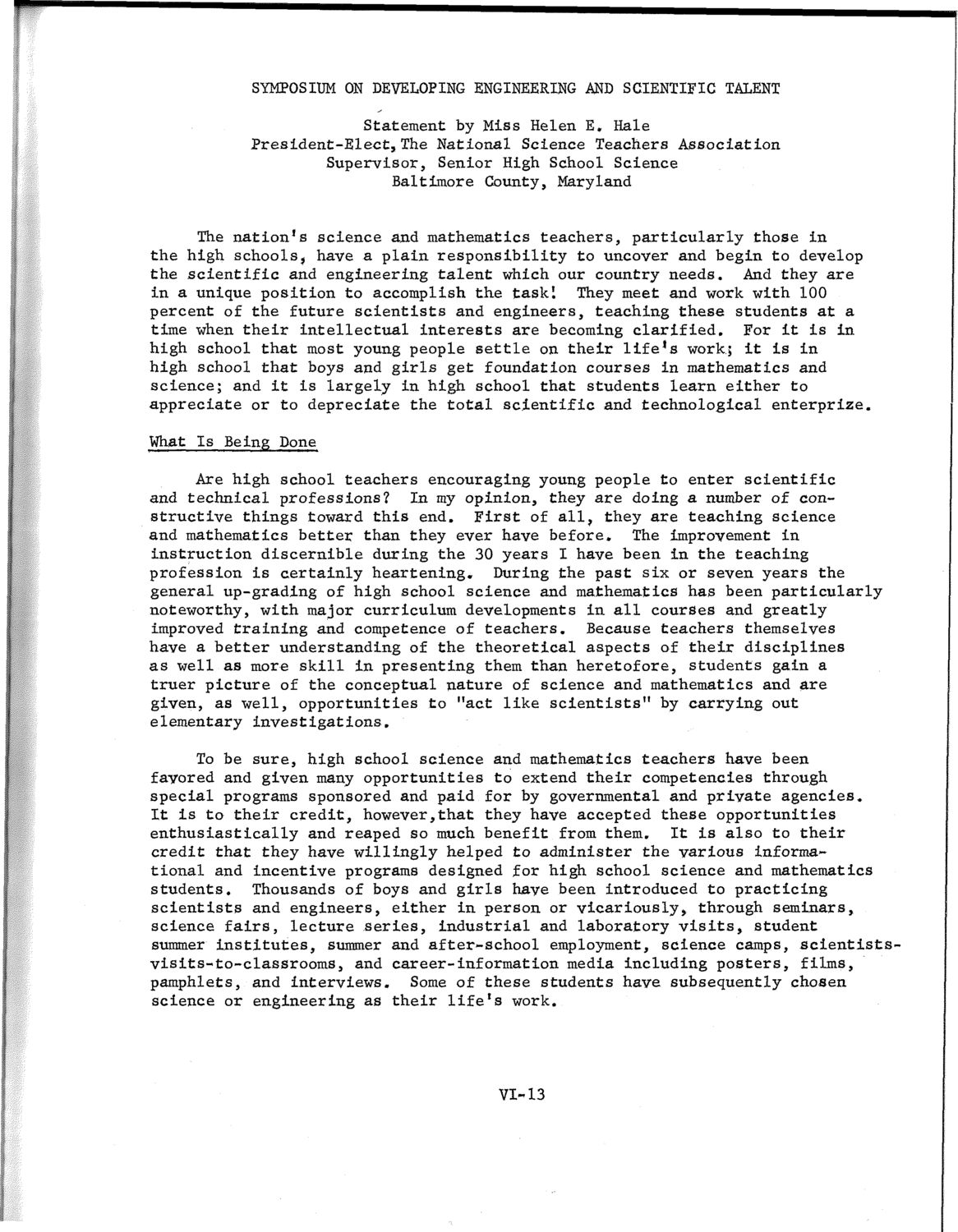| |
| |
Caption: SWE - Proceedings of the First International Conference of Women Engineers and Scientists
This is a reduced-resolution page image for fast online browsing.

EXTRACTED TEXT FROM PAGE:
SYMPOSIUM ON DEVELOPING ENGINEERING AND SCIENTIFIC TALENT Statement by Miss Helen E. Hale President-Elect, The National Science Teachers Association Supervisor, Senior High School Science Baltimore County, Maryland The nation's science and mathematics teachers, particularly those In the high schools, have a plain responsibility to uncover and begin to develop the scientific and engineering talent which our country needs. And they are in a unique position to accomplish the task! They meet and work with 100 percent of the future scientists and engineers, teaching these students at a time when their intellectual interests are becoming clarified. For it is in high school that most young people settle on their life's work; it is In high school that boys and girls get foundation courses in mathematics and science; and it is largely in high school that students learn either to appreciate or to depreciate the total scientific and technological enterprise. What Is Being Done Are high school teachers encouraging young people to enter scientific and technical professions? In my opinion, they are doing a number of constructive things toward this end. First of all, they are teaching science and mathematics better than they ever have before. The improvement in instruction discernible during the 30 years I have been in the teaching profession is certainly heartening. During the past six or seven years the general up-grading of high school science and mathematics has been particularly noteworthy, with major curriculum developments in all courses and greatly improved training and competence of teachers. Because teachers themselves have a better understanding of the theoretical aspects of their disciplines as well as more skill in presenting them than heretofore, students gain a truer picture of the conceptual nature of science and mathematics and are given, as well, opportunities to "act like scientists" by carrying out elementary investigations. To be sure, high school science and mathematics teachers have been favored and given many opportunities to extend their competencies through special programs sponsored and paid for by governmental and private agencies. It is to their credit, however,that they have accepted these opportunities enthusiastically and reaped so much benefit from them. It is also to their credit that they have willingly helped to administer the various informational and incentive programs designed for high school science and mathematics students. Thousands of boys and girls have been introduced to practicing scientists and engineers, either in person or vicariously, through seminars, science fairs, lecture series, industrial and laboratory visits, student summer institutes, summer and after-school employment, science camps, scientistsvisits-to-classrooms, and career-information media including posters, films, pamphlets, and interviews. Some of these students have subsequently chosen science or engineering as their life's work. VI-13
| |